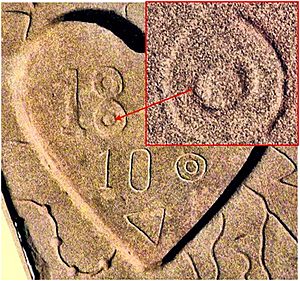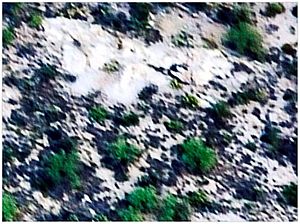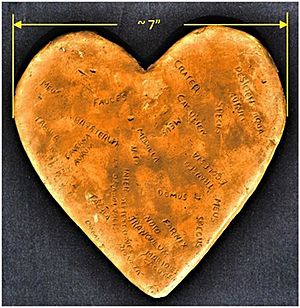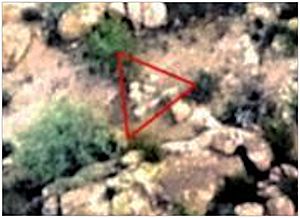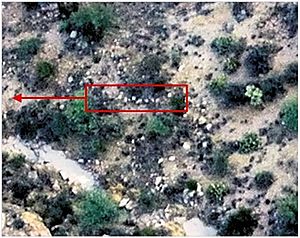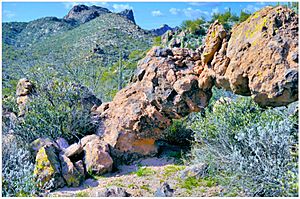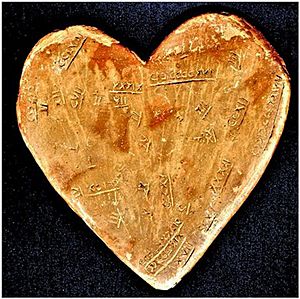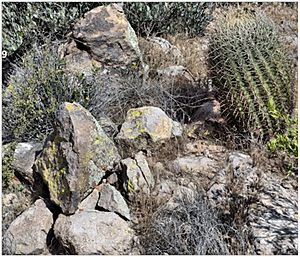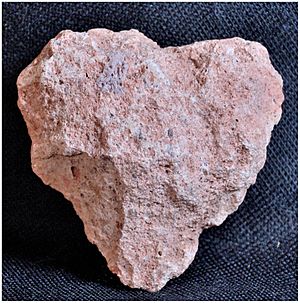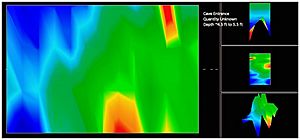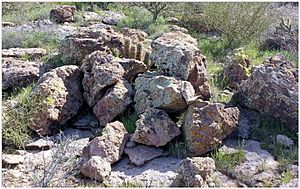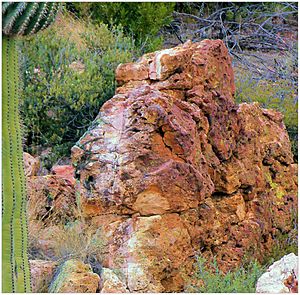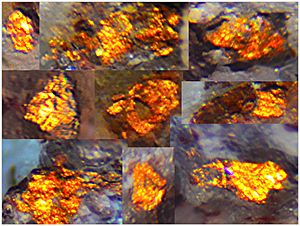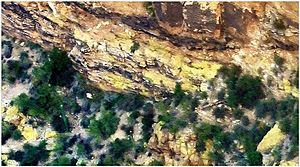Peralta Stones facts for kids
The Peralta Stones are a group of carved stones. Many people believe these stones show the way to the famous Lost Dutchman's Gold Mine. This mine is said to be hidden in Arizona, United States. The "Dutchman" was a German immigrant named Jacob Waltz.
The stones are named after a family called Peralta. This family was said to be an old and powerful Mexican family. Some Peraltas owned a ranch in what is now Oakland, California. Another Peralta, Pedro de Peralta, was a governor in New Mexico. He even chose the spot for Santa Fe. The Peralta name is common in Spain and Mexico. It became linked to the "Peralta" mine because of James Reavis. In 1882, Reavis made up a story about a rich Peralta family in Arizona. He tried to claim a fake Spanish land grant. This grant would have given him a huge area of Arizona and New Mexico, including the Superstition Mountains. His fake family history was found out. He was caught for fraud. Today's legends say some Peraltas mined in the Superstition Mountains. But history books do not support this. The first time a "Peralta mine" was written about was in 1895. This was by a writer named Pierpont C. Bicknell.
Contents
What the Stones Look Like
The Peralta Stones include two red sandstone tablets. There is also a heart-shaped rock made of red quartzite. Each stone block is about 8.25 inches (21 cm) by 14 inches (35.6 cm). They are 2 inches thick and weigh about 25 pounds.
Each red stone block has lines carved into it. One line is very long. When the two blocks are put together, the heart stone fits between them. The long line then has 18 dots carved into it. This type of map is called a Post Road Map. It was used in Mexico and Spain around the time of the Mexican–American War. The stones also have the date 1847 carved on them. One stone has a carved-out space, or intaglio, of a heart. The heart-shaped stone fits perfectly into this space. The back of this stone has the shape of a cross carved into it.
There are different stories about how the Peralta Stones were found. Some say a man named "Jack" found them in 1956. This was near the main highway southeast of Apache Junction, Arizona. Another item found nearby is called the Latin Heart.
The two red sandstone map pieces are shown with a third white sandstone. This white stone is similar in size and weight. The white stone shows a priest putting the Peralta Stones together to form the map. The other side is known as the Horse Map. The Priest's Stone has Spanish writing. It says that to find the gold, you must find the heart.
Are the Stones Real?
Many researchers do not believe the stories of the Peralta Stones. They also do not think the stones themselves are real. The carvings seem to have been made with modern tools. They also use modern symbols and modern Spanish.
Father Charles Polzer is a historian from the Arizona State Museum. He is sure the stones are fakes. One reason is the modern valentine-shaped heart symbol. He says people in the 1800s in Spain did not use this symbol.
The Treasure Map Story
Local stories say the Peralta Stones are a map to the Lost Dutchman's Gold Mine. People have made many claims about where the mine is. These claims are based on how they read the stones. But so far, no one has found any of Jacob Waltz's gold.
There are many ideas about what the map means. There are also many stories about where the stones came from. Most of these ideas and stories are found in books printed by the authors themselves.
Lon Safko believes the Peralta family made the stones. He says they were passed down through many generations.
In 2005, Danny Adams said the stones were a secret code. He claimed the artist Ted DeGrazia made them. Adams said one stone reads, "Be ready boy, are on a map on Arizona county scale, scale map." He used numbers to find the mine in Upper Labarge Canyon.
In 2007, William and Michael Johnson said they found a private cave. They believed it was the mine, based on clues from the Peralta Stones.
Where to See the Stones
The Peralta Stones have been shown at the Arizona Museum of Natural History. This museum is in Mesa, Arizona. It used to be called the Mesa Southwest Museum. In June 2009, they were planned to be shown for a long time at the Superstition Mountain Museum in Apache Junction, Arizona. As of September 2012, the stones are back on display at the Arizona Museum of Natural History.


